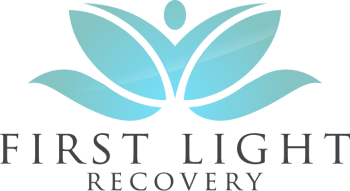Bipolar Disorders
According to the American Psychiatric Association, there are four major categories of bipolar disorder: (1)
- bipolar I disorder – is defined by manic episodes that last at least 7 days or by manic symptoms that are so severe that the person needs immediate hospital care. Usually, depressive episodes occur as well, typically lasting at least 2 weeks. Episodes of depression with mixed features (having depressive symptoms and manic symptoms at the same time) are also possible.
- bipolar II disorder – is defined by a pattern of depressive episodes and hypomanic episodes, but not the full-blown manic episodes that are typical of Bipolar I Disorder.
- cyclothymic disorder – defined by periods of hypomanic symptoms as well as periods of depressive symptoms lasting for at least 2 years (1 year in children and adolescents). However, the symptoms do not meet the diagnostic requirements for a hypomanic episode and a depressive episode.
- bipolar disorder due to another medical or substance abuse disorder – Prominent and persistent mood disturbance, a direct physiologic consequence of substance abuse or medical condition.
There is no known definitive cause for bipolar disorders, only that it is mostly the result of a combination of biological and environmental factors.
What are Bipolar Episodes
Bipolar episodes usually encompass cycles displaying an initial stage of mania or hypomania. That looks like a period of abnormally elevated mood or emotions, high energy and activity level, and usually little need to sleep. This can cycle into depression with difficulties getting out of bed, hypersomnia, hopelessness, and helplessness, and may encompass thoughts of harming self. (2)
Bipolar I and II Differences
The intensity of manic episodes – bipolar I involve more intense and sometimes more severe episodes of mania, whereas bipolar II involves mania at a lesser level, referred to as hypomania. Mania is persisting, elevated, expansive, and/or irritable mood uncharacteristic of the person. These episodes can cycle with grandiose thoughts and self-esteem, decreased needs for sleep, excessive talkativeness and/or tangential speech, flight of ideas, racing thoughts, increased energy, risky and impulsive behavior that appears goal-directed, and a decreased need for sleep.
Mania lasts for at least one week and includes psychotic symptoms, and can need hospitalization. Hypomania lasts for at least four days and does not cause impairment or need for hospitalization, and does not encompass psychotic features. (4)
Depressive episodes – a notable difference between bipolar I to bipolar II is bipolar II has a prevalence of major depressive episodes. Bipolar II encompasses at least one major depressive episode. This can look like a persistently depressed mood, changes in appetite or weight gain or loss, persisting insomnia or hypersomnia, fatigue, psychomotor agitation or slowing, feelings of worthlessness or guilt, difficulty concentrating, and recurring thoughts of death or suicide. (4)
Diagnostic criteria recap:
- Bipolar I – At least one-lifetime manic episode; the manic episode was not because of medications, substances, or medical illness. To be noted is an episode of depression is not required to make a diagnosis.
- Bipolar II – At least one-lifetime hypomanic episode; at least one-lifetime major depressive episode; neither of the hypomanic or the depressive episode(s) was due to the effects of medications, substances, or medical illness. (4)
Triggers
There are many things that can trigger bipolar disorder or a bipolar episode of mania and/or depression or mixed episodes. Alcohol and drug abuse can quickly spiral an individual into an episode. Stress is widely reported as a factor contributing to episodes. This can be stress in a relationship, work stress, and even as a result of a traumatic experience. Other contributing factors can be certain antidepressants and other medications, as well as changes in the seasons, insufficient sleep, menstruation, pregnancy, or other hormonal conditions.
Coping
It is important to seek treatment and stick with it. Being patient with the process is not easy, but it takes time. It is helpful to keep medical and therapy appointments and take all medications as directed. It is encouraged to write a wellness plan that supports structured activities and consistency, that includes sleep hygiene and exercise. Educate yourself on your symptoms. You may need to track them better to identify mood swings, triggers, and warning signs. It’s important to ask for help or support when needed and to avoid alcohol and drugs.
Treatment (1)
- Medication
- Psychotherapy
- Education and self-management techniques
- Alternative Options
- Transcranial magnetic stimulation (TMS)
- Regular exercise
- Daily charting and journaling of daily activity, habits, and mood to provide to clinical providers to aid in supportive care recommendations.
- Mental Health Treatment
Raising Awareness for Bipolar Disorder
Help a friend. Support is very important. With one in five people living with bipolar disorder, lending support can help in decreasing an individual’s risk of self-harming behaviors and increase the likelihood of a timely diagnosis. Talk about it. It reduces stigma and helps individuals with this diagnosis know they are not alone, and gives hope they can improve daily living. Wear a ribbon to show your support for WBD. (3)
Resources:




